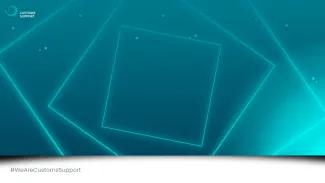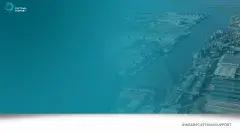Why is AGS no longer sufficient?
In 2016, some changes were made to the Union Customs Code (UCC) regarding the data required for customs clearance.
However, the datasets that were being processed by the Dutch customs system were not aligned with those that are required.
Additionally, the introduction of DMS 4.1 changed the current procedure inschrijving in de administratie van de aangever (IIAA) (previously known as DOMPROC), also known as EIDR or DIN/DEN.
Now, other parties such as warehouses are also now required to submit declarations, instead of only writing them into the bonded warehouse administration.
(We shall refer to IIAA, EIDR, DIN/DEN as EIDR – Entry In Declarant’s Records – from here for simplicity)
The Dutch customs system was not designed to include digital customs clearances for all the parties that now need to submit them, so an upgrade was necessary.
There is currently a transition period, and all traders are required to be migrated to the DMS by the end of 2023.
What will change when you are migrated to the DMS 4.1?
The EIDR authorisation will be used in combination with an authorisation for special procedures, like customs warehousing, inward processing relief, temporary admission, or end-use, and also for companies that import goods with the monthly declaration GPA or SPA (periodic declarations, where data was only submitted to Dutch Customs once a month, delivered to them on a CD-ROM).
Customs will implement the EIDR authorisation with DMS4.1, and this will provide three new procedures:
- Normal procedure (standard clearance into free circulation without EIDR)
- EIDR without chain regulation*
- EIDR with chain regulation*
*Chain regulation refers to the need to present the goods again following the original declaration.
If you have been granted permission to use chain procedure, you enter a lot of data but do not need to present the goods to customs with every change you make to the status of the goods. There are limitations to the goods type eligible for chain regulation, as well as administrative requirements.
Be aware that the current procedures will expire at the end of the transition period, and that all new cases will require electronic presentation on the DMS 4.1 before completing the EIDR.
When to use the normal process and when to use EIDR
Whether or not you need to follow the standard procedure or submit an entry into the declarant’s records depends on several factors.
We suggest that you work with your customs consultant to check the following:
- The operational and economic benefits of your current customs authorisations.
- The implications and potential consequences of using each procedure in your operation.
- Whether there are restrictions on your imported goods, and whether they qualify for chain regulation.
- How the requirements in the Union Customs Code match your customs records and declaration system. Are your applications compliant?
- Your in-house customs expertise and resource.
- Your budget for customs resource.
There are occasions when keeping the EIDR authorisation will not be as beneficial for you compared to the standard procedure. It is important to consider whether you will need to follow special procedures in the near future and need EIDR, or whether you can simplify your processes without it.
Need help migrating to the DMS 4.1?
Customs Support HQ in The Netherlands has been working with authorities and traders like you since the changes were made to the Union Customs Code.
Our customs consultants have collaborated with businesses from all sectors as they consider the changes coming with DMS 4.1, and know how to optimise your supply chain processes as the changes come in. If you need help with upcoming changes with DMS 4.1, feel free to reach out today.















